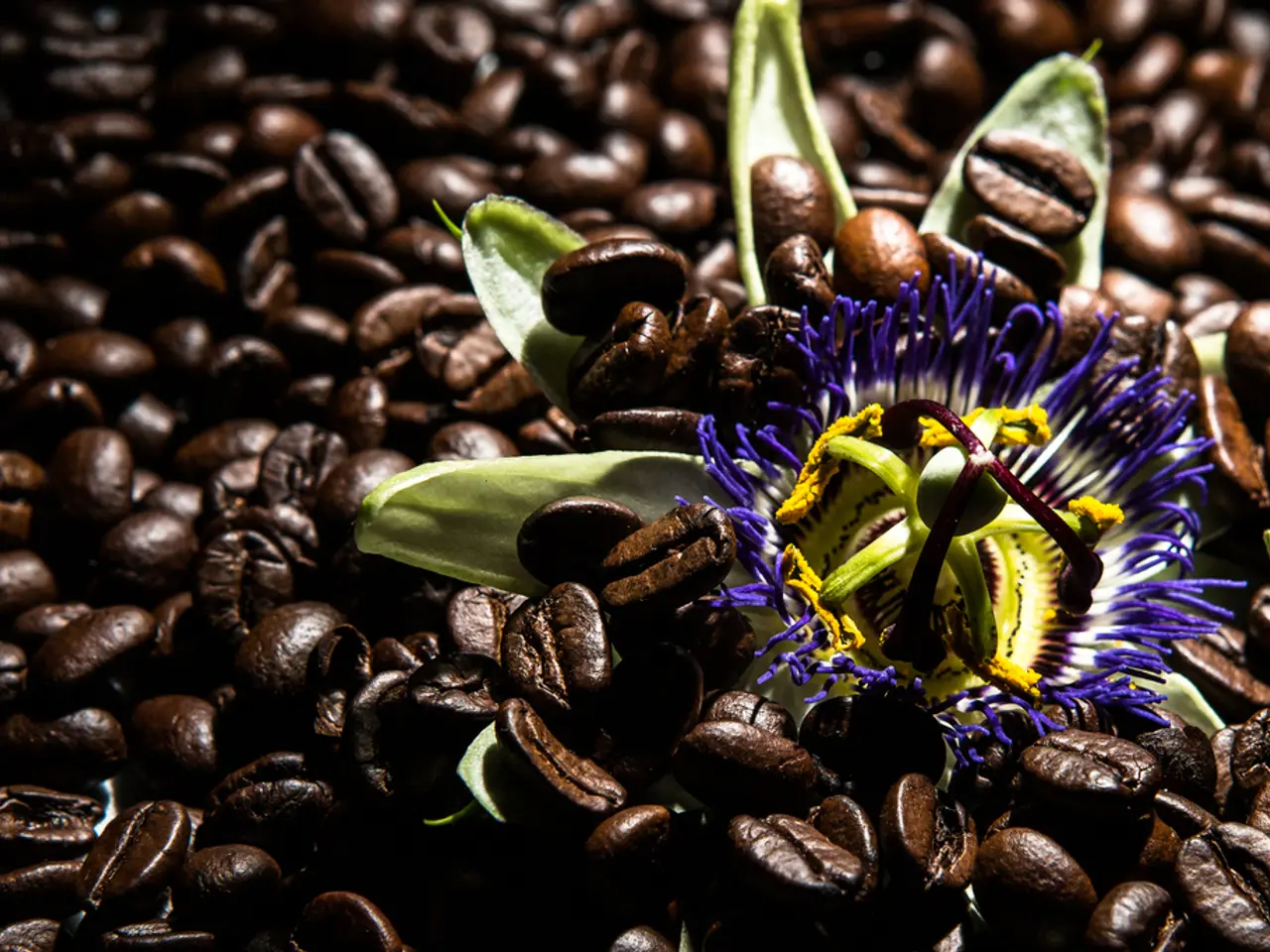Embracing Greener Gardening: Utilizing Coffee Grounds for Planting and Composting
Coffee grounds, more than just a morning pick-me-up, can be a valuable addition to your composting basics. Here's a guide on how to use coffee grounds effectively in your composting efforts.
Firstly, it's crucial to mix coffee grounds well with other organic materials in a compost bin. This helps prevent the creation of a compact barrier that can hinder water flow and potentially kill microbes. A good practice is to pile up organic matter and let bacteria break it down, a process known as static composting.
Turning the compost once a week can speed up the breakdown of materials. However, it's essential to maintain a balance. When adding coffee grounds to a compost bin, keep the total volume to 10% to 20% to avoid disrupting the activity of the microbes that break down organic matter.
Shredded coffee filters can also be added to the compost, as they are rich in carbon nutrients that aid in the breakdown of composting materials.
Dry coffee grounds repel water, so they are best used moist. When adding them to a compost bin, create a 1/3 layer of dried fallen leaves, 1/3 fresh grass clippings, and 1/3 layer of coffee grounds, or use a 4:1 ratio of shredded fallen leaves to coffee grounds.
Coffee grounds-enriched compost is ideal for growing acid-loving plants such as hydrangeas, rhododendrons, hollies, azaleas, lily of the valley, blueberries, carrots, and radishes. However, be aware that some acid-sensitive plants won't fare well when amending the soil with coffee grounds compost. These include geranium, asparagus fern, Chinese mustard, and Italian ryegrass.
When used in the garden, coffee grounds can repel snails, ants, and slugs. However, it's recommended to add a little nitrogen fertilizer to boost nitrogen content if you're using coffee grounds directly in the soil, as coffee grounds should not be used as a nitrogen fertilizer.
Coffee grounds are a great source of nitrogen, with approximately 2% nitrogen by volume. They also have a close to-neutral pH level of 6.5 to 6.8 pH. Coffee grounds are ideal for composting because they're rich in nutrients that support beneficial soil organisms.
Plants like roses, basil, and some herbs such as rosemary benefit from having ground coffee grounds worked into the soil. Coffee grounds enrich the soil with nutrients, improve humus content, and support beneficial soil organisms. Roses particularly appreciate well-prepared soil with good drainage and organic matter, which coffee grounds contribute to. Basil thrives in humus-rich, well-drained soil, conditions improved by coffee grounds. Rosemary prefers humus-rich, well-drained soil and tolerates dry conditions, so coffee grounds can help improve soil quality for it too.
When added to soil, coffee grounds improve soil structure. However, it's important to note that raw or unused coffee grounds should not be added to a compost pit because they contain more acids.
Finally, it takes approximately 3 to 6 months for coffee grounds to break down entirely in compost. To build a backyard compost, use a heavy-duty compost bin that can hold more composting materials. Happy composting!
Read also:
- Poorly Controlled Eaton Fire Largely Contributed to Extensive Losses, According to Report
- Redefining Efficiency: Dubai's Structures Leading the Way in Water Conservation
- Reduced Scope 1 emissions of Airbus due to the use of Sustainable Aviation Fuel
- Unveiling of Advanced Ochre Tools Uncovers Complicated Early Human Craftsmanship




